Photoessay: The Skin and Diabetes Mellitus
by A Huntley
Dermatology Online Journal, December 1995
Volume 1, Number 2
Spontaneous Blisters in Diabetes
A small percentage of persons with diabetes mellitus have been noted to develop spontaneous blistering, especially on the
feet and legs. These lesions usually heal well without treatment, but lesions may rupture, develop an ulcer or become secondarily
infected.
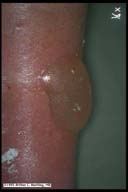
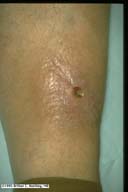
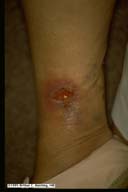
Figs 54-56. Legs of three patients with diabetes mellitus each of whom developed spontaneous blistering. The left image demonstrates
an intact blister on non-inflamed skin. The middle image shows a spontaneous blister with one crusted area. The right-hand
image is of an ulcer and cellulitis that developed as a complication of a ruptured diabetic blister.
When these blisters occur on the feet, they may resemble friction blisters, however there is usually absence of trauma.


Figs 57,58. Two images of the sole of a patient with diabetes mellitus demonstrating a spontaneous blister. The blister developed
during the patients hospitalization for medical problems. Culture and smears of blister material were negative. The lesion
resolved without treatment.
Decreased threshold to trauma may play a role in the development of blisters. Some patients with this condition have been
demonstrated to have decreased threshold to suction blister formation and occasionally the pressure resulting from edema of
cardiac failure is enough to result in blisters.
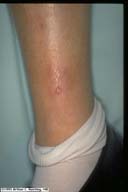
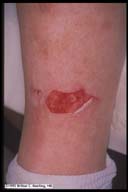
Figs 59,60. Two views of the leg of a patient with diabetes mellitus demonstrating spontaneous blistering and fragile skin.
The left-hand image demonstrates a typical spontaneous blister occurring on non-inflammed skin of the leg. The patient returned
for re-evaluation one week later and when the adhesive tape was removed to inspect the blister, a new erosion was created.
All contents copyright (C), 1995.
Dermatology Online Journal
University of California Davis


